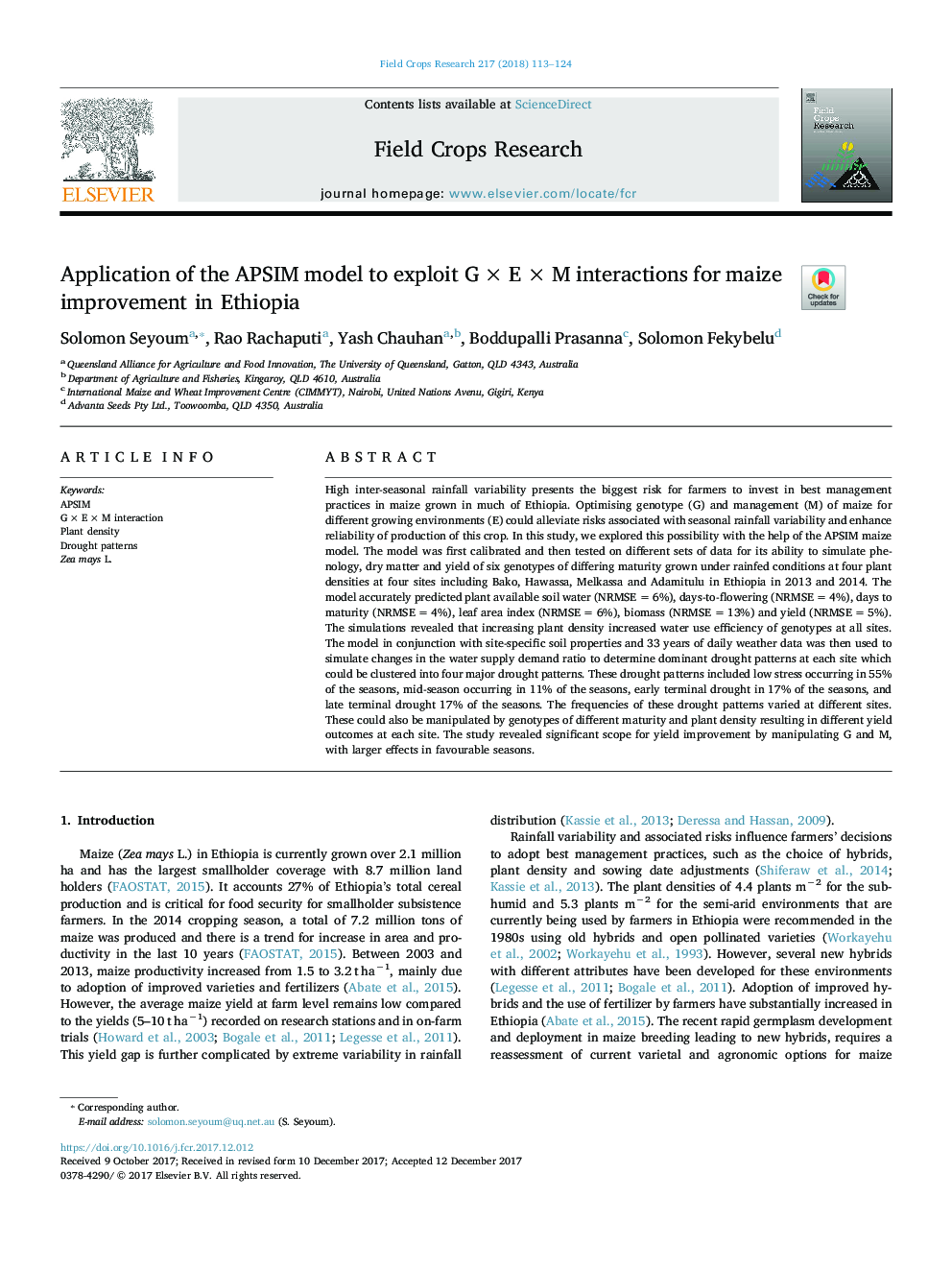| کد مقاله | کد نشریه | سال انتشار | مقاله انگلیسی | نسخه تمام متن |
|---|---|---|---|---|
| 8879397 | 1624646 | 2018 | 12 صفحه PDF | دانلود رایگان |
عنوان انگلیسی مقاله ISI
Application of the APSIM model to exploit Gâ¯Ãâ¯Eâ¯Ãâ¯M interactions for maize improvement in Ethiopia
دانلود مقاله + سفارش ترجمه
دانلود مقاله ISI انگلیسی
رایگان برای ایرانیان
موضوعات مرتبط
علوم زیستی و بیوفناوری
علوم کشاورزی و بیولوژیک
علوم زراعت و اصلاح نباتات
پیش نمایش صفحه اول مقاله

چکیده انگلیسی
High inter-seasonal rainfall variability presents the biggest risk for farmers to invest in best management practices in maize grown in much of Ethiopia. Optimising genotype (G) and management (M) of maize for different growing environments (E) could alleviate risks associated with seasonal rainfall variability and enhance reliability of production of this crop. In this study, we explored this possibility with the help of the APSIM maize model. The model was first calibrated and then tested on different sets of data for its ability to simulate phenology, dry matter and yield of six genotypes of differing maturity grown under rainfed conditions at four plant densities at four sites including Bako, Hawassa, Melkassa and Adamitulu in Ethiopia in 2013 and 2014. The model accurately predicted plant available soil water (NRMSEâ¯=â¯6%), days-to-flowering (NRMSEâ¯=â¯4%), days to maturity (NRMSEâ¯=â¯4%), leaf area index (NRMSEâ¯=â¯6%), biomass (NRMSEâ¯=â¯13%) and yield (NRMSEâ¯=â¯5%). The simulations revealed that increasing plant density increased water use efficiency of genotypes at all sites. The model in conjunction with site-specific soil properties and 33 years of daily weather data was then used to simulate changes in the water supply demand ratio to determine dominant drought patterns at each site which could be clustered into four major drought patterns. These drought patterns included low stress occurring in 55% of the seasons, mid-season occurring in 11% of the seasons, early terminal drought in 17% of the seasons, and late terminal drought 17% of the seasons. The frequencies of these drought patterns varied at different sites. These could also be manipulated by genotypes of different maturity and plant density resulting in different yield outcomes at each site. The study revealed significant scope for yield improvement by manipulating G and M, with larger effects in favourable seasons.
ناشر
Database: Elsevier - ScienceDirect (ساینس دایرکت)
Journal: Field Crops Research - Volume 217, March 2018, Pages 113-124
Journal: Field Crops Research - Volume 217, March 2018, Pages 113-124
نویسندگان
Solomon Seyoum, Rao Rachaputi, Yash Chauhan, Boddupalli Prasanna, Solomon Fekybelu,